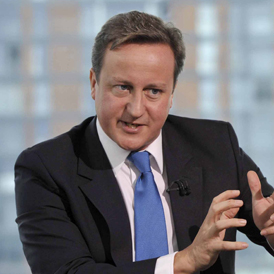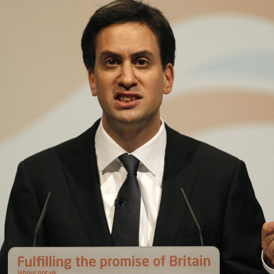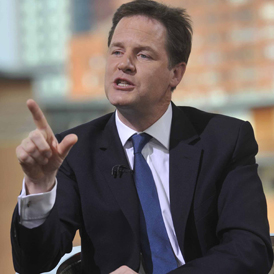The importance of being centrist
As a Channel 4 News poll reveals voters think David Cameron is as right-wing as Ed Miliband is left-wing, YouGov’s Peter Kellner writes on the importance of being centrist.
Most politicians reckon that one of the best ways to win elections is to appeal to the centre. David Cameron spent his time as leader of the opposition trying to persuade voters that his party was no longer right-wing.
Last week Ed Miliband protested in his main speech to Labour’s conference that he was a centrist and not “Red Ed”.
It’s all about perceptions. Whatever attempts are made to define “the centre” or calibrate a party’s policies according to some objective standard, what matters is where voters think parties and their leaders stand.
So what do voters think just now? YouGov found out by repeating the “spectrum” questions it asks from time to time. We asked respondents where parties, their leaders and themselves stand. We offered seven options, and converted them into numbers, from minus 100 for very left-wing, via 0 for centre to plus 100 for very right-wing. Here is what we found.
Voters
As in the past, most voters place themselves at or near the centre. Fifty four per cent say they are in the centre or “slightly” to the left or right.
Just 12 per cent say they are “very” or “fairly” left-wing, and 10 per cent “very” or “fairly” right wing. These figures show why it is important for political leaders to occupy the centre ground.

David Cameron
David Cameron enjoyed some early success. Michael Howard’s rating during the 2005 election campaign was plus 52. By the summer of 2007, Cameron was seen as only half as right-wing: his rating was minus 28. It then drifted right-wards to stand at minus 39 during last year’s election campaign. This helps to explain why his party failed to win an outright victory at a time when Gordon Brown was widely disliked and his government thought to have screwed up the economy.
Since last year, Cameron has been seen to drift further to the right. His latest rating, plus 43, is slightly less extreme that the plus 48 he scored in January. He won’t be happy to be seen as far to the right as Miliband is to the left. If he is to obtain the full electoral fruits of economic recovery between now and the next general election, he too will want to be seen rather nearer the centre.

Ed Miliband
Ed Miliband is seen as further to the left than Tony Blair or Gordon Brown. On the eve of the 2005 general election, Blair was seen as slightly to the right of centre: his average score was plus 7. Just before last year’s general election, Brown’s average score was minus 27. Miliband’s score is minus 42. This is little changed on the minus 45 he scored in January, when he had been leader just a few weeks. He has not been able to shake off the “Red Ed” accusation.
The good news for him is that Labour voters are comfortable with his ideological location. They rate him as minus 32, and themselves at minus 33. The trouble is that Labour’s support is not strong enough for this to guarantee him victory at the next election.
Although Labour remains narrowly ahead of the Tories, this is at a time when the government is unpopular and the economy is stumbling. Economic recovery by 2015 is likely to help the Tories; Miliband will need to reach beyond his core vote to win. Our spectrum poll suggests this could be hard to achieve unless he is thought to move nearer the centre.

Nick Clegg
Here’s a paradox. On average voters place the leader of the Liberal Democrats Nick Clegg exactly in the centre. It’s the one occasion when a polling rating of nought is good news. He has erased the left-of-centre image that the Lib Dems used to have (Charles Kennedy’s rating in the 2005 election was minus 21 – substantially to the left of Tony Blair). He has also pulled back from his right-of-centre reputation last winter: his January rating was plus 10.
On the face of it, he and his party ought to be popular; instead they have lost more than half the support they enjoyed last year. When we delve into the figures more closely, we see why. Conservative voters dislike him because they think he is left-of-centre – while Labour voters reject him as too far to the right for their taste. These attitudes cancel each other out in Clegg’s overall average.
Another way to look at the figures is to compare what each respondent says about the party leaders with what they say about themselves. On this test of closeness, Cameron and Miliband score significantly better than Clegg – though none score particularly well. All three leaders, then, have work to do. None of them come near to Tony Blair’s achievement when he was Prime Minister of being seen as a centrist leader close to the outlook of the majority of voters.
-
Latest news
-
Year of civil war in Sudan ‘a nightmare of hunger and displacement’4m

-
Israel fears repeat Iran attack, says former editor of Jerusalem Post4m

-
How long could it take to clear the Rwanda asylum seeker backlog?3m

-
Rwanda asylum boost for Sunak as bill expected to become law2m

-
Donald Trump trial: day one of historic Stormy Daniels court case4m

-




